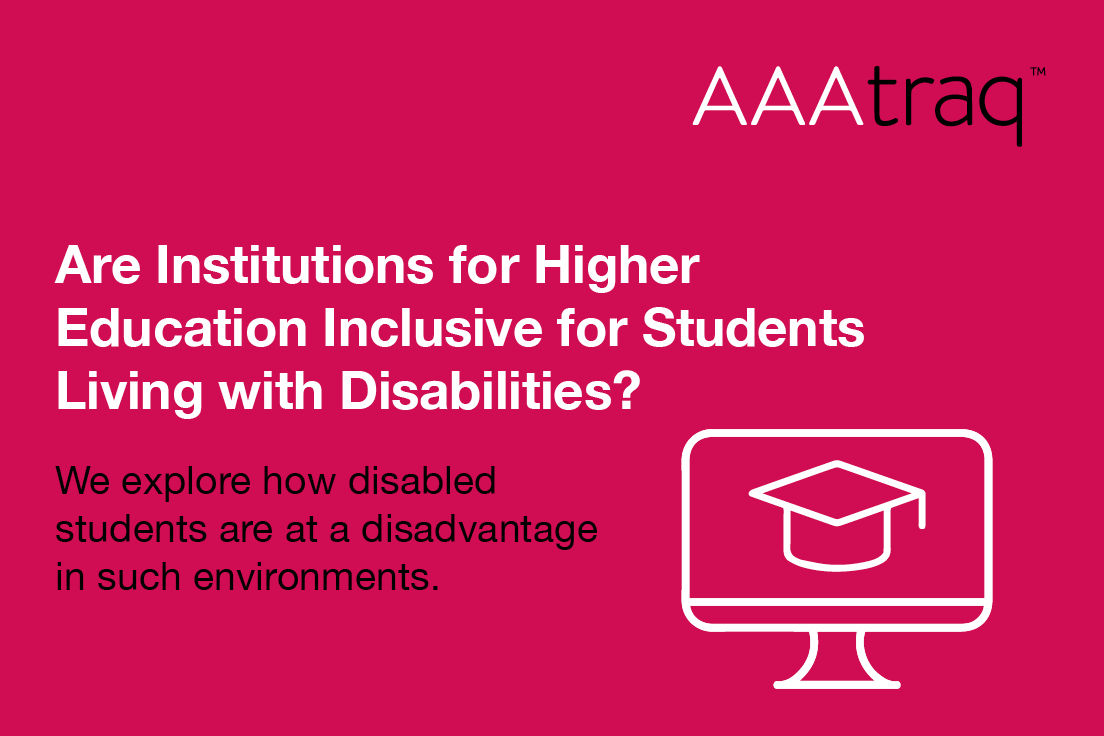Are Institutions for Higher Education Inclusive for Students Living with Disabilities?
Jan 20 2022
According to the National Center for Education Statistics, in the 2019-2020 academic school year, there were nearly 4,000 degree-granting postsecondary institutions in the United States.1
Enrolled in those institutions each all are roughly 20 million students. These students matriculate from secondary institutions from all around the world and represent the diversity of these varying regions. The diversity of these institutions is just a microcosm of the hyper-globalized and diverse world that exists today. Students of different nationalities, races, religions, ethnicities, disability status, etc., come together on these university platforms and engage in the diffusion of cultural/intellectual/social elements from their identities in their pursuit of academic excellence.
While the traditional university structure that has dominated post-secondary education throughout modern times (thought of by many as the norm) dates to eleventh and twelfth century Europe, a new educational structure appears to have grown in popularity because of the COVID-19 pandemic. As many localities strictly enforced social distancing mandates, most institutions were forced out of their classrooms. Instead of offering courses predominantly in-person (on university/college campuses), these Institutions for Higher Education (IHEs) began engaging with their students on a variety of platforms. As academia is just as hyper-globalized as the rest of the world, the most efficient way to instruct students was to do it online. In 2021, many universities had just begun to re-open their campuses to in-person offerings, online instruction (sometimes referred to as virtual instruction/distanced learning/e-learning), which had been a IHEs dominant component of instruction since March of 2020, seems to be making a return. With outbreaks of new variants such as Delta and Omicron forcing many localities to reconsider shutting down, online instruction is not likely to go away.
Disabled students are amongst those who are already disadvantaged in the traditional instruction environment, and they appear to be greatly disenfranchised by the transition to a new environment. Disabled students are amongst the largest minority groups present on university campuses. Nearly one in five undergraduate students identify as being disabled.2 Before transitioning to the virtual environment, disabled students were already at higher risk of dropping out of their institutions because of their disability status.3 In order to alleviate some of the burden associated with the barriers at institutions for higher education, disabled students have historically sought accommodation. Such accommodations, for the past few decades, have offered the critical support necessary for disabled students so that they can complete their schooling. Until recently, these accommodations were only provided in the in-person format.
Due to the emergent nature of the shift by institutions of higher education from the in-person environment to the online environment, many institutions were ill prepared to adapt the accommodations they provided to what the disabled students needs were in this environment. The virtual environment is radically different from the in-person environment, and many of those accommodations already readily available in-person hold no weight when moved online. Many of the accommodations that are the most crucial to students in both environments were, and are, incredibly difficult to transition to the virtual environment. Still, these accommodations are required to be provided to the students. Aside from the accommodations, many students had a hard time even attending their class prepared. Many of the materials provided, platforms on which course instruction occurred, and software on which users (students) took exams were inaccessible to disabled users. Of the 1,766 homepages for accredited post-secondary institutions scored by AAAtraq for their digital inclusivity, roughly 97% demonstrated to not be inclusive.
As many institutions transition (at least temporarily) back to the virtual platform, it has become clear that they must do better. But how? Universities are plagued by poorly drafted vendor contracts, inaccessible software technology, and complacency/ignorance when it comes to digital inclusivity. First, if you’re an institution for higher education, the least you should be doing is educating yourselves (as well as your faculty) on what it means to be accessible and inclusive. Second, do a better job when acquiring new software and technology: look at what it does and talk to counsel on ways to best make sure your contract is providing you with the tools and information necessary to avoid a suit. Third, understand that the impacts of making your webpages more accessible is universal, and only betters your institution’s ability to serve all members of the community. In doing so, you must train your staff in how manage compliance/inclusivity daily.
1 “Ipeds Data Explorer,” The Integrated Postsecondary Education Data System, accessed December 30, 2021, https://nces.ed.gov/ipeds/Search?query=number+of+institutions&query2=number+of+institutions&resultType=all&page=1&sortBy=relevance&dataYears=2018-19&overlayTableId=28458 (opens in a new window)
2 Cristobal de Brey et al., “Digest of Education Statistics 2019,” Digest of Education Statistics 2019 § (2021), pp. 1-595, 216.
3 David W. Leake and Robert A. Stodden, “Higher Education and Disability: Past and Future of Underrepresented Populations,” Journal of Postsecondary Education and Disability 27, no. 4 (2014): pp. 399-408, 403.
Subscribe to AAAtraq and enjoy complete cover and peace of mind
